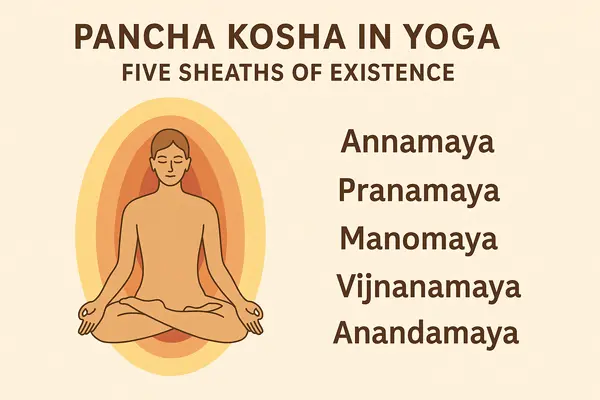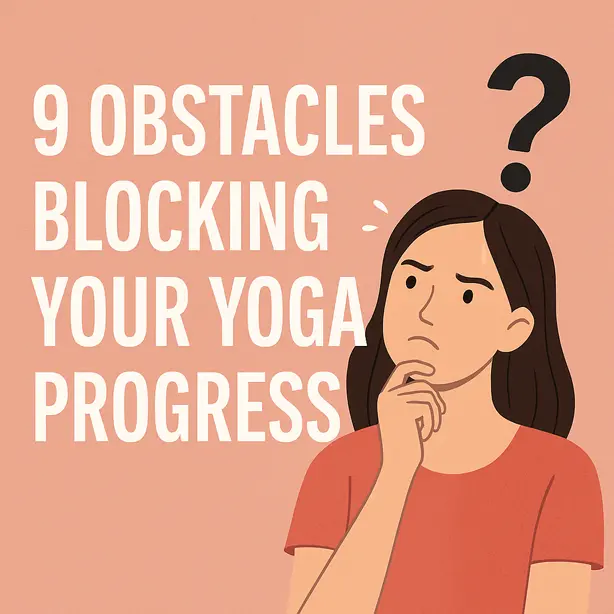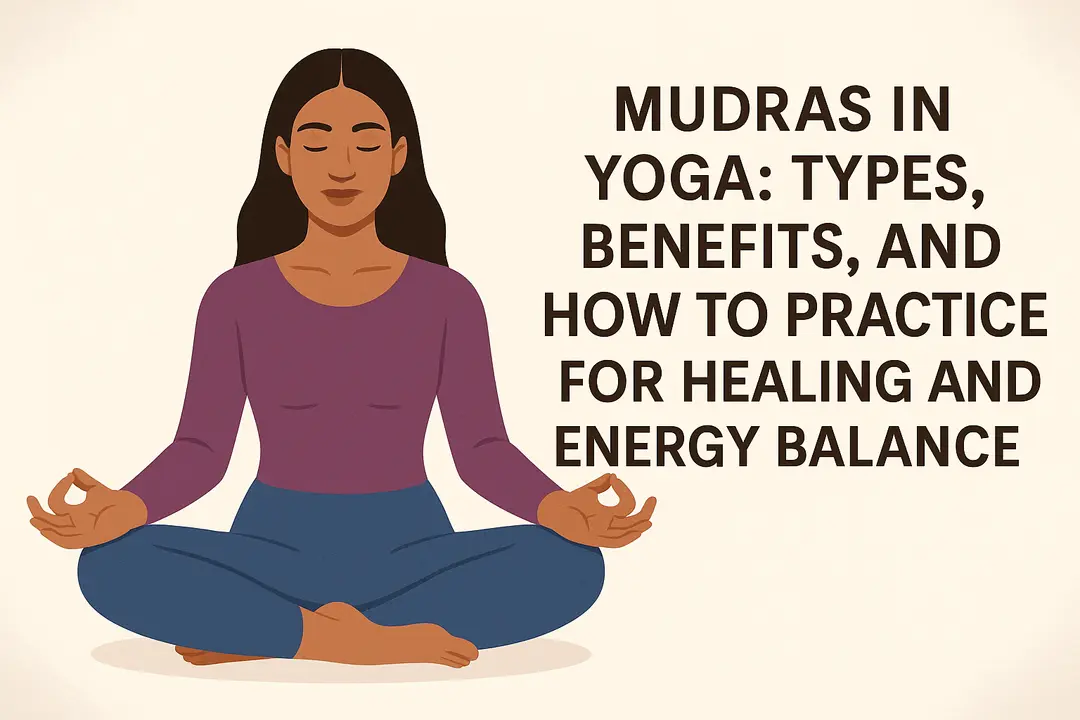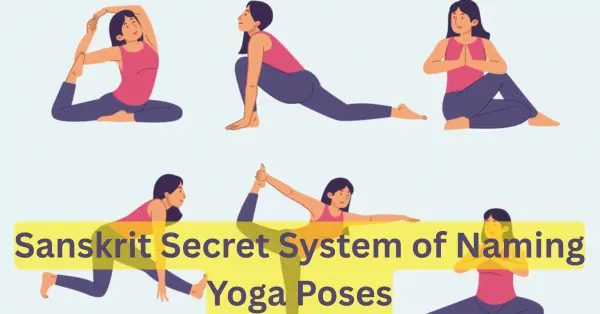When the word Yoga comes up, the ideas and images of twisting and turning the body or breathing techniques come to the mind. But is it really yoga?
No!
What really is Yoga then?
The Sanskrit root ‘Yuj’ that means ‘to join/union’ gave birth to the term Yoga. So, Yoga is the union of individual consciousness with the supreme consciousness. Every mean that leads to this union is thus called Yoga. It’s not some mindless twisting and turning of the body. The idea that postures and breathing exercises are a foundation for self-realization is totally ignored in the west and now even in the east.
Why do we always want the next high? Why are we never satisfied? What are we really looking for? The answer is self-realization. We are always seeking that complete freedom indirectly. We will not be satisfied until we accomplish that zenith of knowing our own true self. Yoga can make us feel that is being said here, only when we start the practice and becomes steady on it to attain it.
The system of Yoga provides a methodology for expanding one’s self-consciousness to supreme or universal consciousness. There are different means of Yoga/union putting forth different forms of Yoga.
In this article, we will discuss the different forms/paths of Yoga and their secrets, particularly the Raja Yoga.
Before that one must know that the purification is the first stage of the Yoga.
There are two kinds of purification-internal (mental) and external (physical).
Yama, Niyama, Asana, and Pranayama purifies in Raja Yoga. In Hatha Yoga, the six purification actions (Dhauti, Bhasti, Neti, Trataka, Kapalbhati, and Nauli) does so. Selfless service and self-surrender/devotion achieve the same in Karma and Bhakti Yoga respectively. Viveka, Vairagya, Titiksa, Sama and Dama does so in Jnana Yoga.
Without further ado, let’s get to the different types of Yoga:
I. Raja Yoga
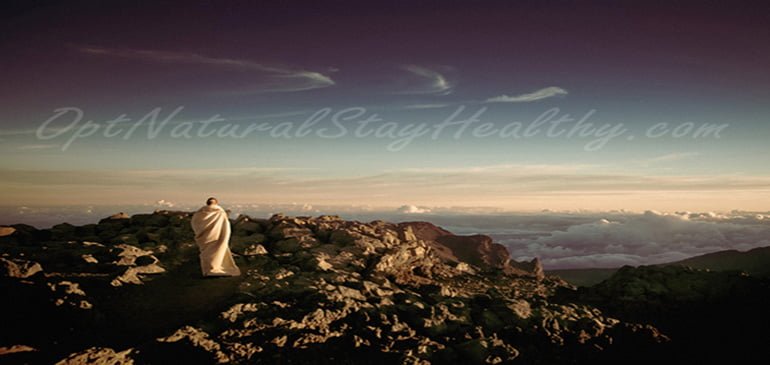
Maharishi Patanjali’s Ashtanga Yoga or Eight-fold path of Yoga or Raja Yoga is a Royal road indeed. Raja Yoga is the king of all other paths. There is no struggling with the pranas (life-trons) or physical body. It directly deals with the mind.
योग: चित्त-वृत्ति निरोध: (Yogah Chit Vritti Nirodh) – Maharishi Patanjali
Yoga is inhibition (Nirodh) of all the mental modification (Chitta-Vritti) or Yoga is restraining the mind-stuff (Chitta) from taking various forms (Vrittis).
To simplify this, imagine a lake. We cannot see the bottom of the lake if its surface is covered with ripples or the water is muddy or the water is agitated all the time.

However, if the water is clear and there are no waves, one shall definitely see the bottom. Here the bottom of the lake is our true self/self-realization, the lake is Chitta and the waves are the Vrittis. Self-Realization is the ultimate and only goal of human lives.
Everything else is an explanation of this very verse. Now let’s understand how the Raja Yoga works.
Raja Yoga stands on 8 (ashtanga) limbs, where each one of them is equally important:
1. Yama– Self-constraint
It is practicing-
a) Ahimsa– Non-injury b) Satya– Truthfulness c) Asteya– Non-stealing
d) Brahmacharya– Celibacy (there is no exact term in the language English, so this term is used just to give people a gross idea. Brahamacharya ≠ Celibacy)
“There must be perfect chastity, in thoughts words and deed. Without it, the practice of Raja Yoga is dangerous and may lead to insanity.” -Swami Vivekananda
e) Aparigraha– Non-covetousness
in THOUGHTS, WORDS, and DEEDS.
2. Niyama- Spiritual observance
It is the observance of –
a) Saucha– Internal and external purity of the body.
b) Santosha– Contentment
c) Tapas– Austerity
d) Svadhyaya– Repetition of Mantras and study of spiritual books
e) Ishvara-Pranidhana– Self-surrender and worship of the object of worship.
Yama and Niyama are the base of Yoga. There is no success in yoga without these.
3. Asana- Posture
स्थिरसुखमासनम् ॥४६॥ [Sthir Shukam Asanam (66)]– Yoga Sutras (Maharishi Patanjali)
The Verse states that a stable asana(posture), comfortable to an individual is desirable. One should select an asana (Siddhaasana, Padmasana, and Sukhasana are quite popular) in which the head, neck, and back remain straight in a vertical line.
One has to undergo a series of exercises (physical as well as mental too) daily to reach a certain level of perception, Asana helps with it. Also, Asana is indispensable to minimize/eliminate the instability of the body.
Asana is a prerequisite for Pranayama and meditation. If someone is meditating without the correct posture (head, neck, and back in one straight vertical line), that person is harming the system.

4. Pranayama- The Knowledge and control of Prana (lifetrons) are Pranayama.
Pranayama is not something about breath, as many thinks. It has very little to do with the breath. Breathing is only one of the exercise through which we can get Pranayama. We take help of the gross (Breath) to reach the subtle (Prana).
If we control our breath we can easily control our nerve currents. Control of nerve currents allows us to control our thoughts and control of thoughts leads to the control of Prana. Prana is the sum total of all energy in the universe. It is the sum total of all forces of nature. Control of Prana opens the doors to almost unlimited power.
All the different groups of mind-healers, Faith-healers, hypnotist, etc. have the same background i.e. control of Prana whether they know it or not. If you squeeze out all of their theories, the extract will be the same.
5. Pratyahara- Abstraction of senses
In a nutshell, it is attaching and detaching the mind to or from any given object at will.
How difficult is that? Well, to be honest, it is quite difficult for the masses. One can compare the mind to a monkey whose nature is ever restless. Now imagine the condition of that monkey after drinking alcohol to its heart’s content then getting stung by a scorpion and over the top beaten with a stick. Wouldn’t the monkey go crazy jumping around insanely?
Well, such is the case of human mind inebriated with desires, stung by the scorpion of jealousy and lastly beaten with a stick by the pride making it think itself of all importance.
One can never go beyond the body consciousness without the perfect Pratyahara.
6. Dharna- Concentration
After you have attained the Pratyahara. Now you can put your mind on anything and everything at your will. Dharna is concentrating on one thing and just one thing at a time. Not even a single thought should arise other than the object of concentration, this is perfect Dharna.
When the mind is desire-less, the body is light and without the disease. When the color is shining, the smell pleasant, the voice sweet and excrement are few, they say, the first degree of concentration is achieved.
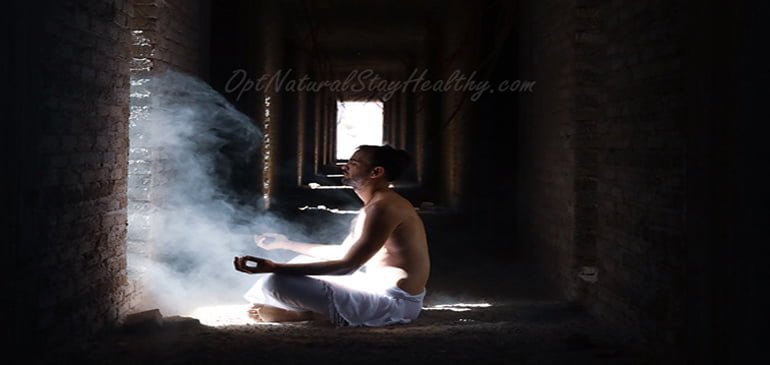
7. Dhyana- Meditation
Meditation, in a nutshell, is an incessant, uninterrupted, and unbroken flow of the idea of the thing that is being concentrated/meditated upon.
Some people directly tries to go for Meditation and fail miserably. How can you expect to attain the 7th step without ascending the first six? Expand the mind then meditate.
Eyeballs become steady when the mind becomes steady with the meditation. A yogi with a steady mind will exhibit no blinking at all. The eyes will become red or pure white. A person will get many new feelings, sensations, and experiences during the course of meditation. One should keep continuing on the course of meditation without getting attached to these.
8. Samadhi- Super-Bliss/Super-Conscious state
We can understand this by an example. When we eat our food we do it consciously but are we conscious about that food turning into glucose and then blood and so on? We do it unconsciously. We are conscious of the table next to us or the people around but we are not conscious of our internal organs, different parts of the mind or the mind itself.
The action of our heart is out of our control but with great practice, we can control it at will. It suggests that it is only us doing the unconscious work. So there is a plane of consciousness accompanied by the egoism i.e conscious work and a plane of unconsciousness unaccompanied by the egoism i.e unconscious work.
It doesn’t end here, there is something beyond the consciousness or unconsciousness. Just as the unconscious work is beneath the conscious work, so there is another work which is above consciousness, also unaccompanied by the egoism. This is called Samadhi or Super-Bliss/Super-Conscious state where the mind goes beyond the line of self-consciousness. The egoism is only in the middle plane.
 Cosmic consciousness (Savikalpa Samadhi)
Cosmic consciousness (Savikalpa Samadhi)
Savikalpa means with modifications and imaginations of the mind. Grand and sublime. Induces supreme joy, awe and the unalloyed, highest felicity free from fear, pain, and sorrow. It is below the absolute consciousness. No doubt, it is a very subtle and divine experience but there is still the object and subject, seer and see i.e. there is still a veil of ignorance left.
Absolute Consciousness (Nirvikalpa Samadhi)
Explicitly, Nirvikalpa means free from modifications and imaginations of the mind. There is neither space and time nor causation in this state. Indeed an unconditioned, ineffable state where the thinker and the thought, the meditator and the meditated, the devotee and the devoted become one.
Also, If one wants Samadhi, one must know the Dhyana perfectly. To know Dhyana, one must know the process of Dharna. For Dharna, one must accurately know the method of Pratyahara. If one wants Pratyahara, one must know the Pranayama well. For Pranayama, one must know the Asana well and before Asana one should practice the Yama and Niyama.
Prerequisite
Bold understanding, accurate and strong reasoning. Fit for the people of Mystic Temperament. Swami Sivananda is an example of this path.
II. Hatha Yoga
Hatha yoga deals with the physical body or using the body to attain the maximum. To achieve the goal, a student of Hatha Yoga tries to awaken the Kundalini Sakti (Divine Energy) dormant in the Mooldhara (Root) Chakra by Asana, Pranayama, Mudra and Bandha. He/she then tries to arise the Kundalini Sakti Chakra by Charka only to take it the Sahasrara (crown) Chakra and realize the self.
A Hatha yogi just like Raja Yogi first attains the Savikalpa (with mind’s imaginations and modifications) Samadhi, then Nirvikalapa (without mind’s imaginations and modifications) Samadhi and then he merges into the boundless supreme self.
Another analogy to understand this is that of a building. The ground floor represents the life of sense-pleasures, the first floor is Savikalpa Samadhi, the second floor is Nirvikalpa Samadhi and the third floor is the adobe of supreme-consciousness.

According to Hatha Yoga-
If you can fix the mind on an object for ten seconds, it is Dharana. Ten such Dharanas becomes Dhyana. Ten such Dhyanas become a samadhi (cosmic consciousness).
What is the science behind ‘Hatha yogi getting into Samadhi’?
Bandhas and yogic processes unite the Prana and Apana Vayu. The United Apana and Prana are driven in the spinal canal (Sushumna Nadi). Prana raises/draws up the mind along with Sushumna. When the mind is in the Sushumna, the yogi becomes practically dead to the world. He loses the objective consciousness of the world. Don’t know if you get it or not but this is the exact process.
The mind loses its own consciousness, the thinker and the thought, the meditator and the meditated, the devotee and the devoted become one. The “I” and “everything else”, seer and seen, the experience and the experienced become one. Unity, sameness or oneness prevails called the Nirvikalpa Samadhi.
Prerequisite
An aspiring person requires no sharp intellect. The person should have total control over self, must be moral in all walks, and should devote himself to his master.
A teacher/master of Hatha yoga need not be a learned like a Jnani, he must have a thorough knowledge of traditional ways and well up on traditional lore. Pure conduct is also a must for a teacher. Fit for the people of Mystic temperament. Guru Gorakhnath is a classic example.
III. Jnana Yoga
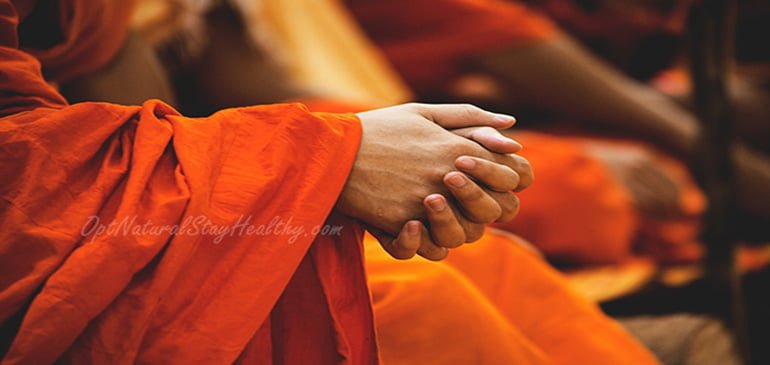
A dry path as they say. It is merging into the self by remembering/inquiring who we actually are. This is the path of wisdom or the path of knowledge. Unlike Hatha and Raja Yoga, the intellect and will of the aspirant play a vital role here.
Following are the steps of Jnana Yoga one has to go through to attain the final adobe i.e self-realization through Jnana:
- Viveka (Discrimination(Knowledge)
- Vairagya (Dispassion to sensual enjoyment)
- Titiksa, Dama, and Sama (Forbearance, Sense control and Calmness of Mind)
- Samadhana, Sraddha, and Uparati (Balanced state of mind, Belief, and Tranquility)
- Mumukshutva (Intense longing for Self-Realization)
- Sravana (Hearing the virtues of the Supreme)
- Manana (Reflection (right thoughtfulness)
- Nididhyasana (Deepest meditation)
- Sakshatkara (Self-Realization)
Who is a Jnani/ Characteristics of a Jnani
A full-blown Jnani-
- sees himself/herself (A Jnani or say a self-realized being is above/beyond gender, it is just for the reference here) in every being and everywhere.
- has no personal component in him/complete selflessness.
- lives to serve all.
- has a cosmic feeling and cosmic vision.
- is not a bondsman of moods and emotions (always totally free from sorrows, worries, anxieties, tribulations, and troubles)
- is always happy and cheerful under all circumstances
- has Nine Riddhis and eight Siddhis (supernatural powers) as his mere slaves.
- is the very embodiment of sympathy, true love, mercy, serenity, patience and so on.
Just as the mind assumes a fine state during the sleep, the mind in a Jnani is always in a subtle state. A Jnani gets into Nirvikalpa or Nirbija Samadhi through simple thought. A Jnani doesn’t see the world as we do. Jnani doesn’t see any object outside of himself/herself.
Prerequisite
The follower of Jnana Yoga must have a sharp intellect. A man who has removed the worldliness and all sorts of attachments and sense pleasures, such a man is quite fit for this path. Fit for the people of Intellectual temperament. Maharishi Raman is one popular example.
A moral and learned Jnani can give a discourse on contemplation and philosophy according to the sharpness of the mind/intellect of different students.
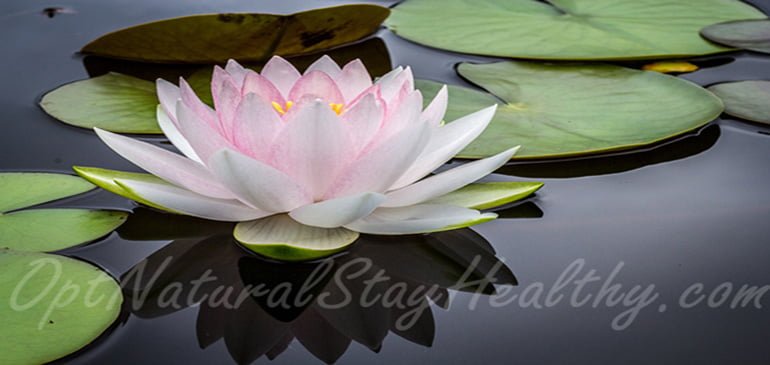
IV. Karma Yoga
The path of selfless actions or indeed self-transcending actions. Initially, the path is very difficult due to the ego-ridden mind but with time things tend to go smooth.
A tousled mind can’t work at its optimum level. A student of Karma yoga should have knowledge of ways, nature, and habits of mind. The follower of the path should also have a basic knowledge of Raja Yoga, Ayurveda, Vedanta, and physiology.
One has to always remember that utmost sacrifice is demanded in Karma Yoga. Your own progress must be of secondary importance while working for others. A Karma Yogi naturally realizes the self over time or even many lifetimes.
Characteristics
- Unshakable faith in himself.
- The great power of endurance, patience, and perseverance.
- All-inclusive and all-embracing.
- A simple lifestyle.
- The welfare of others before own.
- A balanced and cool mind with all the senses under command.
- Completely free from the greed, anger egoism and lust.
- Equal-vision.
Prerequisite
Selfless service, firm faith in one’s own self. For the people of Active temperament. Swami Vivekananda is a fit example.

V. Bhakti Yoga/Devotion Yoga
Devotion Yoga is totally based on the devotion of the devotee. The devotion is like a silken thread of pure love that connects the heart of a devotee with the Supreme Being or the object of devotion. It is spontaneous and outpouring love. There is not a tinge of expectation or bargaining in it.
In addition, one cannot define this supreme feeling in the words as it can only be felt. The devotion for the object of devotion is such that the devotee depends on the object of devotion for food, protection, and even the very existence.
Devotion Yoga softens the heart and removes jealousy, anger, hatred, egoism, pride, arrogance, lust, etc. At the same time, it infuses bliss, knowledge, divine love and ecstasy in the devotee. All worries, fears, cares, anxieties, mental torments, and tribulations completely subside. The aim and the result of Bhakti Yoga are the same as other forms of yoga.
The characteristics of a devotee:
- Equal vision for all.
- No enmity for anyone.
- No attachment for anything.
- A devote has got no idea of “mine-ness”
- An exemplary character.
- Balanced mind in all states i.e. in pain and pleasure, praise and criticism, heat and cold.
- Name of “Object of devotion” is also on the lips.
- Full of peace and patience
There are countless qualities and characteristics of a true devotee. Above mentioned are the most basic and necessary of all.
Prerequisite
Literally just pure devotion and the object of devotion. People of Emotional temperament are fit for this. Ramakrishna Paramhansa is a fit example of this path.
Some key difference in different paths of yoga
1. When a Hatha Yogi enters into the Samadhi, it is very difficult to bring him to objective consciousness just by merely shaking his body or any sound. On the other hand, you can bring a Raja Yogi, Jnani or a devotee (Bhakta) to normal consciousness by blowing a conch or shaking his/her body.
2. A Raja Yogi and Hath Yogi plugs his mind like a cork to make it blank during meditation while a Jnani doesn’t care about mind during meditation as he has controlled it at the beginning of his practice. Bhakta/Devotee gets into the trance state by merely remembering the beloved object of devotion. For a Karma Yogi, the selfless- service is his wisdom/devotion/everything.
3. Viveka and Vairagya are the foundation of Jnana Yoga while Yama and Niyama are the foundation of Raja Yoga. Similarly, Sravana, Manana, and Nididhyasana 0f Jnana Yoga correspond to the Dharana, Dhyana, and Samadhi of Raja Yoga of Maharshi Patanjali.
4. A Hatha Yogi starts the practice with body and Prana, a Raja Yogi with the mind and a Jnana Yogi with the Buddhi and will.
5. Raja Yoga and Hatha Yoga are inter-dependent. Perfection is next to impossible without the practice of both. Raja Yoga starts where correctly practiced Hatha Yoga ends.
6. Bhakti Yoga is like tasting/eating the sugar while Jnana/Raja/Hatha Yoga is becoming the sugar.
7. For vast majority either Karma Yoga exclusively is fit or Karma+ Jnana Yoga or Karma+ Bhakti Yoga or Raja+Bhakti yoga or Raja+Karma Yoga.

Conclusion
The practice of Yoga (be it of any kind) is propitious to health and longevity. It rightfully modulates the functions of the heart, lungs, and brain. Promotes the circulation of blood and digestion. It also removes all sorts of diseases and enables one to possess zenith standards of health, vigor, and vitality. A yogi doesn’t waste the even an iota of energy in the useless direction, this is the secret why the yogis turn out such humongous works.
Further, a combination of various exercises of Raja, Hatha, Jnana, and Bhakti Yoga is desirable to ensure speedy success in the self-realization. The world doesn’t vanish during samadhi rather the idea that the world is different from the supreme vanishes. As long as the mind exists, it must have an object to occupy and the aim of any meditation/spiritual/Yoga practice is to present it with the supreme one.
In a generic sense, Yoga is referred to Raja Yoga, Karma Yoga, Bhakti Yoga, Jnana Yoga, Mantra Yoga, Hatha Yoga, Kriya Yoga, and Laya Yoga. In a very restricted sense, Yoga means the Ashtanga Yoga or Raja Yoga of Maharshi Patanjali. All fruits the same result. Yoga (union) matters because it is the final fate/destination/goal of each being.
One must tread tirelessly on the path of Yoga to experience it. Mere reading or listening or debating about it will not do anything. So, Arise, awake, practice and stop not till the goal of life (Self-Realization) is reached.
Quotes
Yoga is the journey of the self, through the self, to the self.
– The Bhagavad Gita
Yoga is the Divine Science which disentangles the Jiva from the phenomenal world of sense-objects and links him with the Absolute.
– Swami Sivananda
Yoga means to be in perfect tune. Your body, mind and spirit and the existence are in absolute harmony. When you fine-tune yourself to a point where everything functions so beautifully within you, the best of your abilities will naturally flow out of you.Yoga is a tool to find ultimate expression to life. Every human being must explore and know this.
– Sadhguru
There is no possibility of one’s becoming a yogi, if one eats too much, or eats too little, sleeps too much or does not sleep enough, works too much or doesn’t work at all.
– The Bhagavad Gita
Yoga is a method for restraining the natural turbulence of thoughts, which otherwise impartially prevent all men, of all lands, from glimpsing their true nature of Spirit. Yoga cannot know a barrier of East and West any more than does the healing and equitable light of the sun.
– Paramahansa Yogananda
The chief helps in this liberation are Abhyasa and Vairagya. Vairagya is non – attachment to life, because it is the will to enjoy that brings all this bondage in its train; and Abhyasa is constant practice of any one of the Yogas.
– Swami Vivekananda
Although yoga has its origins in ancient India, its methods and purposes are universal, relying not on cultural background, faith or deity, but simply on the individual. Yoga has become important in the lives of many contemporary Westerners, sometimes as a way of improving health and fitness of the body, but also as a means of personal and spiritual development.
– Tara Fraser

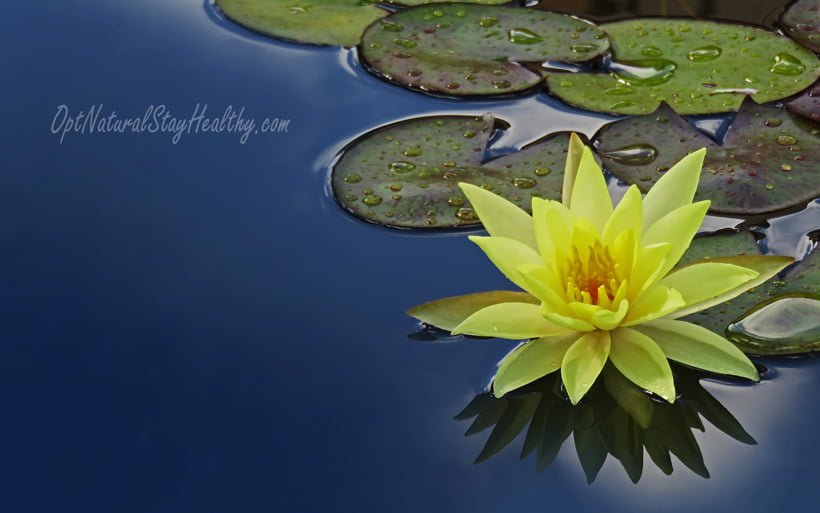
 Cosmic consciousness (Savikalpa Samadhi)
Cosmic consciousness (Savikalpa Samadhi)